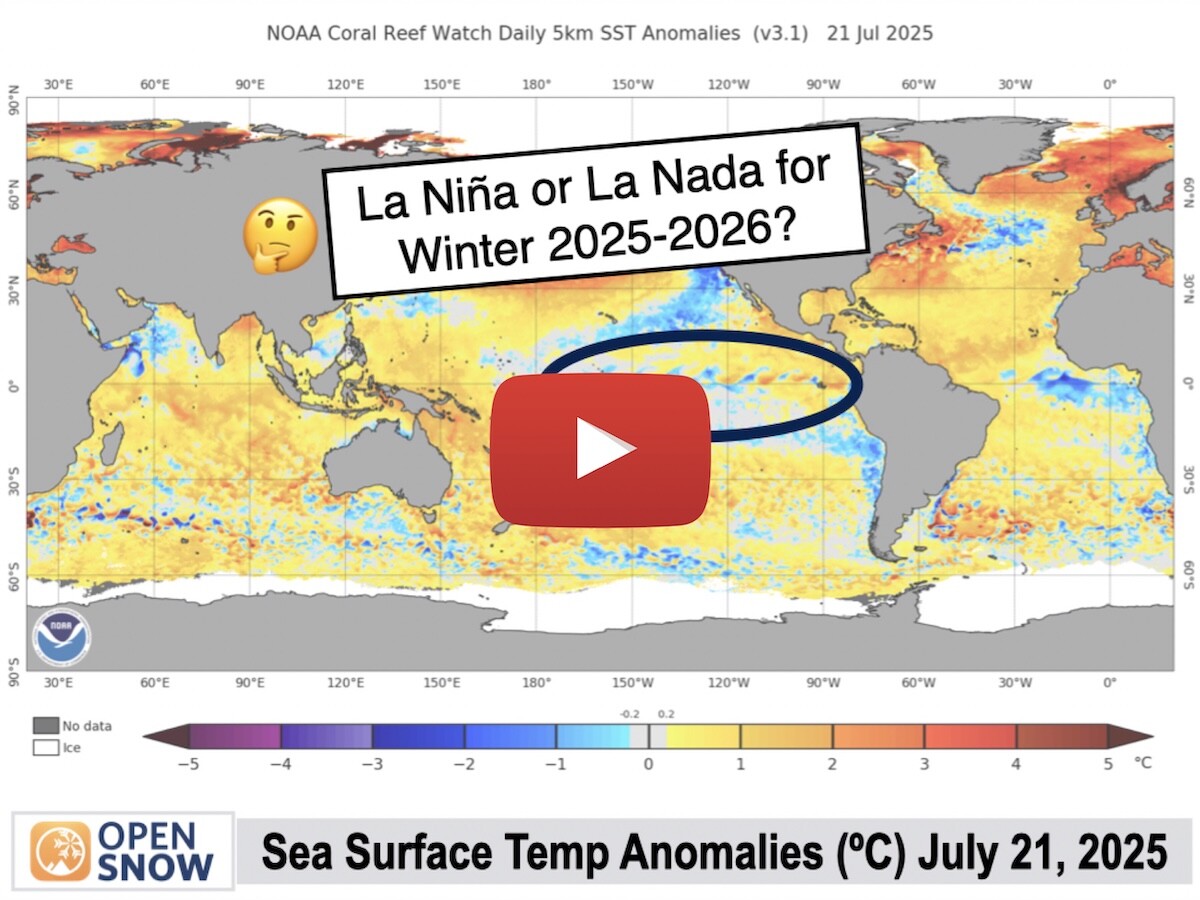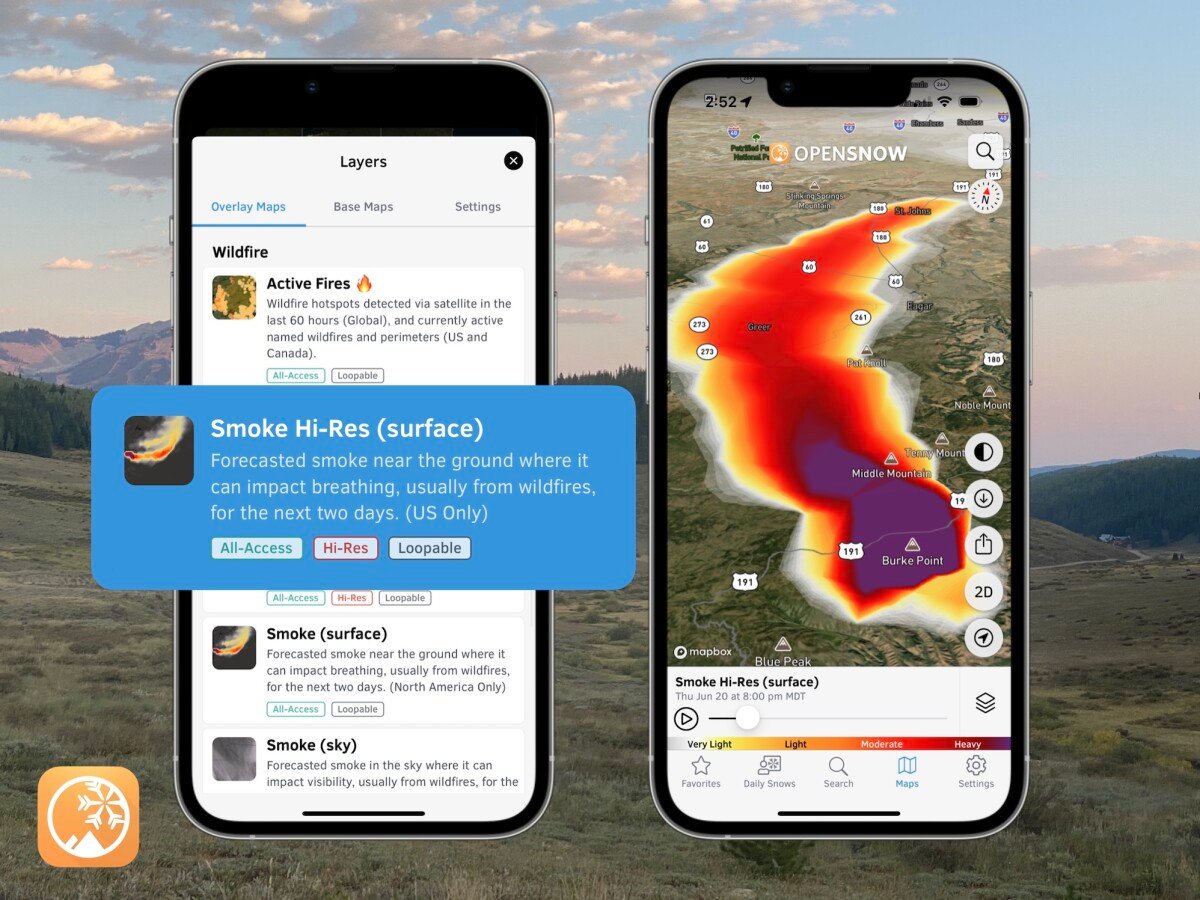Western US Daily Snow

By Alan Smith, Meteorologist Posted 2 years ago July 27, 2022
Thunderstorms and heavy rain for the Southwest
Summary
An active monsoon will remain over the Southwest through the end of the week with widespread thunderstorms and flash flooding potential. Areas near and east of the Divide in Colorado will also see a significant threat of flash flooding on Thursday & Friday. A heatwave will continue across the PNW into the weekend while fires continue to burn in California and Idaho.
Short Term Forecast
Forecast Highlights:
- Active thunderstorm pattern continues across the Southwest and Southern Rockies for the foreseeable future.
- High threat of flash flooding for the remainder of this week across the Southwest and Southern Rockies.
- A mix of wet and dry thunderstorms across the Sierra and Northern Rockies over the next 3-5 days.
- Heat wave continues across the Pacific Northwest through Friday with only minor relief this weekend.
- Large wildfires burning in Idaho and California with heavy smoke near the fires and light smoke drifting across the rest of the West at times.
Synopsis:
A tall ridge of high pressure remains centered over the Northwest U.S., resulting in very hot temperatures across Washington, Oregon, and Idaho, especially east of the Cascades. Meanwhile, an active monsoon remains in place across the Southwest with well-above-average moisture levels.
An area of low pressure is also setting up over Arizona, which will result in atypical east to west storm motions across much of the Southwest, with slow storm motions leading to a higher threat of flash flooding.

Monsoon Update:
It has been an active monsoon season so far, and we have seen further intensification in recent days. This trend looks to continue for the remainder of this week and into next week as well, which is right in line with the climatological "peak" of monsoon season (late July and early August).
On Wednesday, weak winds aloft from east to west around an area of low pressure over Arizona will result in slow-moving thunderstorms, which combined with anomalously high moisture levels will result in a significant threat of flash flooding across the Southwest and Southern Rockies.
A Canadian cold front will also work its way into Central Wyoming on Wednesday, resulting in isolated thunderstorms east of the Divide in Wyoming and Montana but with less of a heavy rain threat.
Moisture levels will be elevated across the Pacific Northwest, but stable air associated with high pressure will limit thunderstorm potential.

On Thursday, significant monsoonal moisture will remain in place across the Four Corners region, while the Sierra Nevada Range should see a reduction in thunderstorm chances as more stable air moves in despite moisture levels remaining high.
A cold front will also work its way into Eastern Colorado and Northern New Mexico on Thursday, and significant moisture is expected to filter into the Front Range, eastern slopes of the Continental Divide, and adjacent plains, resulting in an uptick in thunderstorm activity with heavy rain potential.
Monsoonal moisture will also work its way into Idaho and Wyoming, where an uptick in thunderstorm activity is expected.
Similar conditions are expected on Friday as well with heavy rain potential across the Southwest, Southern Rockies, and adjacent plains.

There is a threat of excessive rainfall and flash flooding throughout the Southwest and Southern Rockies on Wednesday, with the core of the threat shifting into Southeast Colorado (along and east of the Divide) on Thursday.
Burn scars, steep/rocky terrain, dry washes, slot canyons, and areas previously saturated with rain will be the most susceptible areas to flash flooding.


Lightning Outlook:
Thunderstorm activity and lightning risk will be widespread across the Four Corners region and Southern Nevada on Wednesday, with scattered thunderstorms across the Sierra Nevada Range as well. Isolated thunderstorms can also be expected across the Northern Rockies, mainly along and east of the Divide.
This model is likely overdoing the lightning potential across the Pacific Northwest since stable air associated with the heat wave will likely suppress thunderstorm development. Still, a few dry thunderstorms couldn't entirely be ruled out.

Thunderstorms will be widespread over the Four Corners once again, but activity will also increase northward into Northern Utah, Idaho, and Wyoming. Far northern areas in Montana, Idaho, and Northeast Washington could also see some dry thunderstorms.

A similar pattern is expected on Friday with thunderstorms expected throughout the Rockies and the Southwest, while the Sierra will only see some isolated storms at best.

Temperature Outlook:
Well-above-average temperatures will continue across the Pacific Northwest from Wednesday to Sunday. The next three days from Wednesday to Friday will be the hottest days, with some relief expected west of the Cascade Crest on Saturday and Sunday.
Meanwhile, cooler than average temperatures will prevail across the Southwest and eastern side of the divide in Colorado and Wyoming for the most part over the next 5 days.

Fire and Smoke Outlook:
The Oak Fire in California and the Moose Fire in Idaho remain the two biggest smoke producers at the moment. Higher humidity associated with the monsoon moisture push has helped to reduce the spread of the Oak Fire and firefighting efforts have increased as a result.
Over the next couple of days, heavy smoke is generally expected to remain close to and immediately downwind of these fires, while light smoke will result in occasional hazy skies across the Great Basin and Northern/Central Rockies, as well as Oregon.

The greatest fire danger over the next few days will be across the Northern Rockies, where a mix of wet and dry thunderstorms is expected. In areas where dry thunderstorms occur, there will be a greater risk of lightning-triggered fires along with gusty outflow winds that could exacerbate fire behavior.
View → Smoke (Surface) Forecast Map (out to 2 days)
View → Air Quality Forecast Map (out to 5 days)
View → Current Air Quality Map
Extended Forecast
Outlook for Saturday (7/30) to Tuesday (8/2):
Heading into the weekend, the Northern Rockies will see a drying trend while an active monsoon will continue across the Four Corners states with the potential for heavy rainfall and flash flooding, especially across Arizona, New Mexico, Southern Utah, and Southern Colorado. The Front Range and Eastern Plains should see a reduced flash flooding threat compared to prior days.
On Sunday, monsoonal moisture will begin to increase across the Sierra Nevada Range with greater instability resulting in a better chance of thunderstorms.

On Monday and Tuesday, high pressure will break down over the Pacific Northwest and will be replaced with a trough, signaling the end of the heatwave.
As this pattern transition occurs, monsoonal moisture will also increase across the Great Basin and Northern Rockies with increasing thunderstorm chances across Nevada, Idaho, Wyoming, and Montana while the Southwest remains in a daily thunderstorm cycle. The Pacific Northwest (especially Oregon) could potentially see some thunderstorm activity as well.
Outlook for Wednesday (8/3) to Wednesday (8/10):
An active monsoon will remain in place during this period, resulting in below-average temperatures across the Southwest. The Pacific Northwest will also see more seasonal temperatures after the recent heatwave. Temperatures are expected to be above average during this period across California and the Northern Rockies, especially east of the Divide.

An impressive monsoonal pattern will continue during this period with elevated moisture levels and higher thunderstorm chances extending westward into Nevada and California and northward into Idaho and Wyoming. Monsoonal moisture could even reach the Canadian border at times.
As a result, hikers and climbers throughout the Rockies and the Sierra should expect elevated thunderstorm chances during this period.

Thanks so much for reading! Next update on Friday (7/29).
ALAN SMITH
About Our Forecaster




